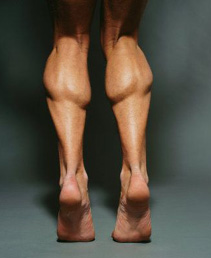Brian Schiff’s Blog
Injury Prevention, Sports Rehab & Performance Training Expert
Well, after a silent stretch the past 2 weeks or so related to my study/preparation for the OCS exam, I am back to blogging! Today’s post is a pertinent one for runners and athletes suffering from lower limb injuries.
Static stretching has taken a bit of a beating in the strength and conditioning world in the last few years. Dynamic warm-ups and active mobility have taken center stage as of late. While these active modalities are certainly superior for prior to practice, play and ballistic activity periods, I still believe stretching has a place in rehab and conditioning.

Interestingly enough, a study recently published in the March 2012 Journal of Strength & Conditioning Research examined the effects of static stretching of the calf and its impact on the strength/ROM of the contralateral side. Click here for the abstract.

In a nutshell, the authors had two groups of untrained individuals: test group (6 male and 7 female subjects) and control group (6 male and 6 female subjects) who participated. The test group did supervised active right calf stretching 3 days per week for 10 weeks (four 30 sec stretches w/30 sec of rest between stretches). They stood on a beam 30 cm above the floor with the left knee slightly bent to offload the left leg as well as placing the hands on the wall while they leaned forward allowing the right heel to drop toward the floor until a max tolerable stretch was felt. The knee was straight throughout on the stretch side.
Control subjects did no stretching at all. All subjects were instructed to maintain their normal physical activity but refrain from any resistance training or stretching during the 10 week investigation. The results:
- 29% increase in 1RM calf raise strength on the right
- 11% increase in 1RM calf raise strength on the left
- significant 8% increase in calf ROM on right
- significant 1% decrease in calf ROM on the left (non stretch side)
- No change in strength or ROM for control group
The authors conclude that the results of this study best apply to rehab settings. For example, they suggest that this procedure may be an effective way to combat the loss of strength in limbs that have been immobilized after injury or surgery simply by stretching the mobile (unaffected) side. They also point out that this may be a way to mitigate strength loss when access to traditional strengthening modalities are not readily available.
Clearly, athletes suffering an acute ankle sprain as well as runners suffering soleus/Achilles/lower limb overuse injuries would benefit from such a strategy. So why does this work? Zhou in earlier work describes a cross training effect due to neural adaptations regulated in the spinal cord.
What does this mean for you and me? Well, as someone who works with many runners I am always looking at eccentric control of the G/S complex as well as effective single leg heel raise strength. The idea that stretching the uninvolved side to strengthen the involved side seems like a no brainer. Clients suffering from tendonitis, plantar fasciitis, stress reactions, sprains and other injuries can use this as an early intervention without stressing the involved side.
More importantly, I like the idea of increasing neural adaptation and ROM in the stretch side through eccentric load as the dissipation of ground reaction forces will be more efficient in a calf that effectively handles eccentric loads through a sufficient range of motion. This study definitely highlights the importance of stretching in novice runners and those with tight gastrocs. I am curious if the bent knee stretch would have had a similar effect primarily on ROM – perhaps they will investigate that further in the future.
As we move more toward mid and forefoot running gait, I believe the fitness of the G/S complex will be even more important than before as stress is transferred away from the knee and more toward the foot/ankle complex. Clearly, we need more studies in trained subjects on unilateral stretching to determine if the same effects and degree of impact will be seen, but this study shows some promise for active static calf stretching in the appropriate populations.

Some people love their calves, while others hate them. Ever see people piling on the weight at the gym (barbells, seated calf press machine, etc.) attempting to build shapely calves? Or maybe you see people performing calf raises on a box with their feet in, straight ahead and out. The question has long been this: is there any real benefit to doing them beyond the neutral or straightforward position to get maximal activation and strength gains?
Why is this important? Well, beyond muscle tone, this question has physiological ramifications with respect to performance and rehabilitation. Consider, for example that as knee flexion angles increase, the medial gastroc becomes increasingly disadvantaged regardless of the ankle position. This suggests inherent functional differences in the muscle architecture and activation patterns of the medial and lateral heads of the gastroc.
In a study just published in the March 2011 Journal of Strength & Conditioning Research, Riemann et al. investigated the impact of all three positions on gastroc activation. They used 20 healthy subjects (10 male and 10 female) with no history of a calf injury and all had prior resistance training experience.

